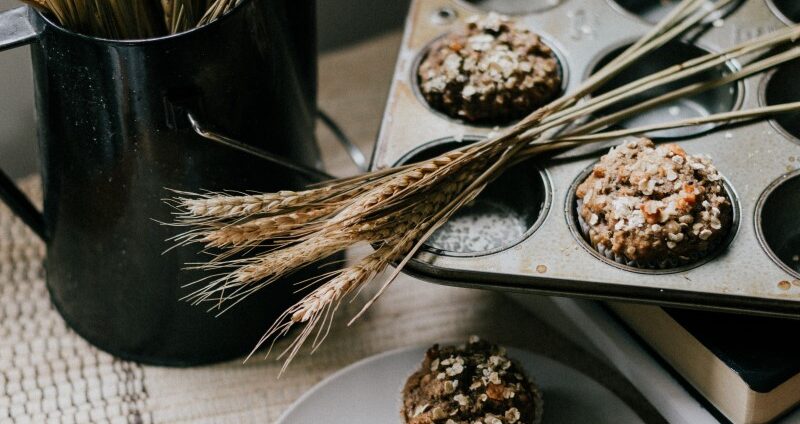Wholegrains & Our Health

Starchy foods are our main source of carbohydrate and play an important role in a balanced diet. It is recommended to, whenever possible, choose wholegrain varieties1.
Wholegrain are made of the entire grain of cereal plants. So, wholegrains contain the bran (the fibre-rich outer layer), the germ (a nutrient-packed inside part) and the endosperm (the central starchy part). In processing to create a “whiter” cereal, the brain and germ are often removed. Examples of wholegrains include wheat, rice, rye, and buckwheat2.
Wholegrains are also rich in a range of nutrients, including B vitamins, omega-3 fatty acid, and protein. In addition, they are a good source of fibre. Some of the fibre provides a food source for the “friendly” gut bacteria, which produce substances, called short chain fatty acids (SCFA), which are important for maintaining intestinal homeostasis. Fibre is important for our health, reducing the risk of bowel cancer, heart disease, stroke, and type 2 diabetes2,3.
Furthermore, low SCFA have been found in patients with irritable bowel syndrome3. It is recommended for adults to consume 30g of fibre/ day, which research suggests as little as 9% of people in the UK achieve. Aiming to eat more wholegrains, can help more of us to achieve the fibre recommendation5.

Research suggests that including wholegrains as part of a balanced diet and lifestyle, they can help reduce the risk of chronic disease, including cardiovascular disease, type 2 diabetes, colorectal, pancreatic, and gastric cancers2,6.
Currently, this is no advice for the exact amount of wholegrains to eat a day in the UK, but other countries have recommended to aim for 3 servings per day. A recent umbrella review of meta-analyses suggested to aim for 2-3 servings (~45g) per day6.
For example, a serving of wholegrains includes1,2:
- 1 tbsp of uncooked whole oats.
- 1 piece of medium slice wholemeal bread.
- 2- 3 tbsp cooked brown rice.
- 2- 3 tbsp cooked wholegrain pasta.
There are many ways we can increase our consumption of wholegrains and fibre. We do not need to do it all, nor do it all at once, but these are some ideas for small changes here and there, which can help to increase our wholegrain and fibre consumption.
- Choosing a bowl of oats for breakfast or a wholegrain cereal such as homemade granola Weetabix or fruit and fibre – see recipe for Overnight Oats
- Swapping white bread or wraps/pitta with wholegrain/wholemeal versions. For example, using wholewheat pasta to accompany bolognaise or brown or wild rice with curries.
- Try rye crispbreads some days for lunch to replace bread. There is such a great variety out there with added chia seeds, pumpkin & sesame seeds to name just 3!
- If making crumbles or baking, try using half white and half wholemeal flour.
- Adding bulgur wheat to casseroles.
- Snack on oat cakes, flapjacks, or plain popcorn.
Resources.
BDA – Wholegrains: Food Fact Sheet
NHS – Starchy foods and carbohydrates
References.
- https://www.nhs.uk/live-well/eat-well/starchy-foods-and-carbohydrates/
- https://www.bda.uk.com/resource/wholegrains.html
- https://www.frontiersin.org/articles/10.3389/fimmu.2019.00277/full
- https://www.nhs.uk/live-well/eat-well/how-to-get-more-fibre-into-your-diet/
- https://www.thelancet.com/journals/lancet/article/PIIS0140-6736(18)31809-9/fulltext
- https://www.sciencedirect.com/science/article/pii/S1556370716300736?casa_token=tt84pvU9eHIAAAAA:KRyAKo_AA0_zbThNmUZNxulYNwLvZgspsNqnVBUsw4F7B5xz0_i_n3y7YzWjvvcclUgP4ZT6BvY
The above was written by Emilia Fish BSc A Nutr, and edited by Sian Shepherd BSc Nutrition, Specialist Gastroenterology Dietitian working within the NHS & private sectors.
0 Comment
Leave a Reply